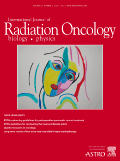
INTERNATIONAL JOURNAL OF RADIATION ONCOLOGY BIOLOGY PHYSICS
Scope & Guideline
Pioneering Research in Cancer Treatment and Biology.
Introduction
Aims and Scopes
- Clinical Outcomes in Radiation Therapy:
Research examining the efficacy and safety of various radiation therapy modalities, including comparisons of treatment techniques, dosimetric analyses, and long-term patient outcomes. - Radiobiology and Mechanisms of Action:
Studies investigating the cellular and molecular mechanisms underlying radiation effects on cancer cells, including radiosensitivity, tumor microenvironment interactions, and immune responses. - Technological Advances in Radiation Treatment:
Innovations in radiation therapy technologies, such as intensity-modulated radiation therapy (IMRT), proton therapy, and stereotactic body radiation therapy (SBRT), and their implementation in clinical practice. - Quality Assurance and Treatment Planning:
Research focused on improving treatment planning processes, quality assurance measures, and the use of artificial intelligence in enhancing the accuracy and efficiency of radiation therapy. - Healthcare Disparities and Access to Care:
Investigations into disparities in treatment access and outcomes among diverse patient populations, with a focus on improving equity in radiation oncology. - Patient-Centered Care and Quality of Life:
Research examining the impact of radiation therapy on patients' quality of life, including symptom management, psychosocial factors, and patient-reported outcomes.
Trending and Emerging
- Artificial Intelligence and Machine Learning:
The integration of AI and machine learning in radiation oncology is increasingly prevalent, focusing on automating treatment planning, improving segmentation accuracy, and predicting treatment outcomes. - Personalized Radiation Therapy:
There is a growing emphasis on tailoring radiation therapy based on individual patient characteristics, including genomic profiles, tumor biology, and treatment response, to optimize outcomes. - Immunotherapy Combinations:
Research exploring the synergistic effects of combining radiation therapy with immunotherapy is trending, as this approach aims to enhance antitumor responses and improve patient prognosis. - Health Equity and Access to Care:
An increasing focus on addressing disparities in access to radiation therapy and understanding the social determinants of health affecting treatment outcomes for underrepresented populations. - Quality of Life and Patient-Reported Outcomes:
Emerging studies are prioritizing the assessment of quality of life and patient-reported outcomes following radiation therapy, highlighting the importance of holistic patient care.
Declining or Waning
- Traditional Radiation Techniques:
Research on conventional radiation therapy techniques has decreased as interest shifts toward innovative methods such as proton therapy and SBRT, which offer improved outcomes and reduced side effects. - Basic Radiobiology Studies:
There has been a noticeable decline in basic radiobiology studies focusing solely on cellular responses to radiation, as the field increasingly emphasizes clinical applications and translational research. - Single-Institution Studies:
The prevalence of single-institution studies has waned in favor of multi-institutional collaborations and large-scale trials, which provide more generalizable and robust data.
Similar Journals
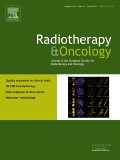
RADIOTHERAPY AND ONCOLOGY
Elevating hematology and oncology with impactful research findings.Radiotherapy and Oncology is a leading peer-reviewed journal published by Elsevier Ireland Ltd, focusing on the vital fields of hematology, oncology, and radiology. With an impressive impact factor and ranking in the top quartiles (Q1) of its categories as of 2023, it is recognized for disseminating high-quality research that contributes significantly to advancements in cancer treatment and patient care. The journal, which has been in circulation since 1983, aims to provide a platform for original research articles, reviews, and clinical studies that explore the latest innovations in radiotherapeutic technologies and oncology practices. This journal is essential for researchers, healthcare professionals, and students who are dedicated to improving cancer therapies and outcomes. Although it does not offer open access, the wealth of information contained within its pages supports continued education and development in these crucial medical fields.

Current Breast Cancer Reports
Empowering Oncologists with Cutting-Edge Insights.Current Breast Cancer Reports is a vital academic journal published by Springer that focuses on the latest research and advancements in the field of breast cancer. With its ISSN 1943-4588 and E-ISSN 1943-4596, this journal serves as an essential resource for oncologists, researchers, and healthcare professionals dedicated to improving diagnosis and treatment strategies for breast cancer. Spanning from 2009 to 2024, it provides a platform for high-quality, peer-reviewed articles that encompass a range of topics, including molecular biology, clinical trials, and innovative therapeutic approaches. Although it is currently classified in the Q3 category in Oncology and is positioned in the 29th percentile, the journal remains committed to elevating its academic impact and contributing meaningfully to the ongoing fight against breast cancer. As it seeks to disseminate critical findings and foster collaboration within the scientific community, Current Breast Cancer Reports is poised to be an indispensable tool for anyone keen on advancing the field.
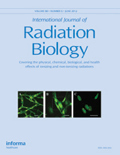
INTERNATIONAL JOURNAL OF RADIATION BIOLOGY
Shaping the Future of Radiological PracticesINTERNATIONAL JOURNAL OF RADIATION BIOLOGY, published by Taylor & Francis Ltd, has established itself as a premier forum for the dissemination of innovative research related to radiation biology, covering emerging topics that are crucial within the fields of radiology, nuclear medicine, and ultrasound technology. With an ISSN of 0955-3002 and an E-ISSN of 1362-3095, this journal spans over six decades, from its inception in 1959 to 2024, reflecting a rich history of scholarly contribution and a dynamic approach to addressing current challenges in the discipline. Its reputation is highlighted by its Q2 rankings in both Radiology, Nuclear Medicine and Imaging and Radiological and Ultrasound Technology for 2023, underscoring its relevance in a competitive academic landscape, with Scopus rankings placing it in the top tier of its category. While operating under a traditional access model, the journal aims to connect researchers, professionals, and students, facilitating the advancement of knowledge and fostering a deeper understanding of the impact of radiation in various medical applications. The journal plays an essential role in shaping future research directions and enhancing clinical practices globally.
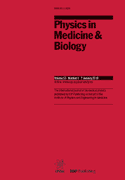
PHYSICS IN MEDICINE AND BIOLOGY
Innovating Healthcare Through Physics and BiologyPHYSICS IN MEDICINE AND BIOLOGY is a prestigious journal published by IOP Publishing Ltd, with a storied history dating back to 1956 and extending through 2024. This internationally recognized journal caters to the interdisciplinary fields of medical physics and bioengineering, making significant contributions to the research and development of advanced diagnostic and therapeutic technologies. It holds an impressive Q1 ranking in both Radiological and Ultrasound Technology and Radiology, Nuclear Medicine and Imaging categories, reflecting its critical role in disseminating high-quality research. With a significant focus on merging the principles of physics with advancements in medicine, PHYSICS IN MEDICINE AND BIOLOGY serves as an essential resource for researchers, professionals, and students alike, fostering innovation and enhancing collaboration in the healthcare sector. Although the journal is not currently open access, it maintains robust participation in the Scopus database, ranking #62 out of 333 in Radiology, Nuclear Medicine and Imaging and #17 out of 63 in Radiological and Ultrasound Technology, signifying its influence and reach within these disciplines.
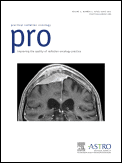
Practical Radiation Oncology
Fostering Excellence in Radiation TherapyPractical Radiation Oncology is a premier journal published by Elsevier Science Inc., focusing on the critically important fields of Oncology and Radiology, Nuclear Medicine, and Imaging. With an ISSN of 1879-8500, this journal serves as an essential resource for professionals and researchers dedicated to advancing the practice and research of radiation oncology. Established in 2011 and continuing through 2024, it has quickly gained recognition, achieving a prestigious Q2 ranking in Oncology and an exceptional Q1 ranking in Radiology, Nuclear Medicine, and Imaging as of 2023. The journal, housed in New York, USA, provides a platform for innovative research and practical insights, aimed at enhancing therapeutic practices and improving patient outcomes. As part of its commitment to fostering scientific dialogue, it also features a range of articles, reviews, and clinical studies that cater to the diverse interests of its readers. Hard-copy availability combined with digital access ensures a broad reach for the latest advancements in the field.

Journal of Radiosurgery and SBRT
Bridging Science and Practice in SBRTJournal of Radiosurgery and SBRT is a dedicated platform for advancing the field of radiosurgery and stereotactic body radiation therapy (SBRT), published by OLD CITY PUBLISHING INC. With its ISSN 2156-4639 and E-ISSN 2156-4647, this journal serves researchers and practitioners keen on the latest findings and methodologies in the domains of radiological technology and surgical oncology. Operating from Spain, the journal has established itself within notable quartiles, ranking Q3 in 2023 across categories including Radiological and Ultrasound Technology, Radiology, Nuclear Medicine and Imaging, and Surgery. The journal is indexed in Scopus, with rankings that place it at #311 in Medicine Surgery and #232 in Medicine Radiology categories, reflecting its significance in the academic community. Although it does not currently offer an open-access model, the Journal of Radiosurgery and SBRT aims to foster innovation and collaboration, making it an essential resource for those involved in cutting-edge research and clinical practice in radiosurgery.

International Journal of Particle Therapy
Unlocking New Possibilities in Radiation MedicineInternational Journal of Particle Therapy, an esteemed publication from the INT JOURNAL PARTICLE THERAPY, stands at the forefront of innovative research in the realms of particle therapy, radiology, and atomic physics. Established as an Open Access journal since 2015, it provides a platform for scholarly articles that drive the advancement of knowledge and practice in cancer treatment and radiation therapy. With an impact factor reflective of its rising stature, this journal has been categorized in the Q2 quartile for both Atomic and Molecular Physics and Radiology, Nuclear Medicine and Imaging as of 2023, illustrating its significant role in contributing to these vital fields. Researchers, professionals, and students alike will find the journal indispensable for accessing pioneering studies that explore the efficacy and application of particle therapy, ensuring that the latest advancements reach a broad audience. With a robust focus on bridging theoretical insights and clinical practices, the International Journal of Particle Therapy remains committed to enhancing patient outcomes and fostering collaboration among scientists worldwide.

Turk Onkoloji Dergisi-Turkish Journal of Oncology
Connecting researchers to transform cancer treatment and prevention.Turk Onkoloji Dergisi - Turkish Journal of Oncology, published by KARE PUBL, serves as a vital platform in the field of oncology, specifically catering to the Turkish-speaking research community and contributing to global discourse. With an ISSN of 1300-7467, this journal, which has been in circulation since 2007 and continues until 2024, recognizes the importance of advancing medical knowledge in cancer research through rigorous peer-reviewed articles. Although currently positioned in the Q4 category of oncology journals with a Scopus rank of #344 out of 404, the journal is dedicated to fostering significant research insights and innovative perspectives on cancer treatment and prevention. While it does not currently offer open access, its content is essential for professionals, researchers, and students aiming to enhance their understanding of oncology developments in Turkey and beyond. The Turkish Journal of Oncology not only aspires to improve the quality of cancer care but also strives to enhance collaboration among researchers, thereby influencing future oncology practices.
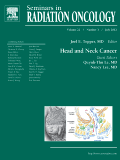
SEMINARS IN RADIATION ONCOLOGY
Transforming Cancer Care through Rigorous ScholarshipSEMINARS IN RADIATION ONCOLOGY is a premier journal published by W B SAUNDERS CO-ELSEVIER INC, dedicated to advancing the field of radiation oncology through high-quality research and comprehensive reviews. With an impressive impact factor and a notable HIndex, this journal holds a prominent place within the academic community, particularly illustrated by its Q2 ranking in both Cancer Research and Oncology, and a Q1 ranking in Radiology, Nuclear Medicine, and Imaging as of 2023. Since its inception in 1991, the journal has served as a vital resource for researchers, clinicians, and healthcare professionals, facilitating the exchange of innovative ideas and practices that shape the future of cancer treatment. While the journal is not open access, it offers essential insights into the latest advancements in the field, catering to a diverse audience eager to expand their knowledge and improve patient outcomes in the realm of radiation therapy.
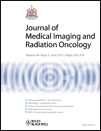
Journal of Medical Imaging and Radiation Oncology
Fostering Innovation in Imaging for Enhanced Cancer CareJournal of Medical Imaging and Radiation Oncology, published by WILEY, is a pivotal resource in the fields of oncology and medical imaging. With an impact factor reflective of its commitment to advancing research, the journal has maintained a robust reputation since its inception in 2008 and continues to thrive through 2024. It is indexed with an insightful ranking, with a Q2 classification in Radiology, Nuclear Medicine and Imaging, affirming its importance in these disciplines. This journal not only serves as an open access platform, allowing extensive reach and accessibility, but also fosters a scholarly community dedicated to the innovation of imaging techniques and radiation oncology practices. As a key player in disseminating crucial findings and advancements, it appeals to researchers, clinicians, and students who aim to contribute to the evolving landscape of medical imaging and cancer treatment methodologies. The journal is based in Australia, at 111 River St, Hoboken, NJ, and invites submissions that push the boundaries of current knowledge in this critical area of healthcare.